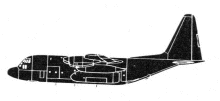Incident Overview
Date: Monday 7 February 1944
Aircraft Type: Consolidated PBY-5A Catalina
Owner/operator: Royal Australian Air Force – RAAF
Registration Number: A24-34
Location: off Malakua [Jacquinot Bay] –
ÿ Papua New Guinea
Phase of Flight: En route
Status: Destroyed, written off
Casualties: Fatalities: 0 / Occupants: 10
Component Affected: Aircraft ? Catalina Flying BoatAircraft ? Catalina Flying Boat
Category: Accident

On February 6, 1944, a Catalina flying boat departed Cairns, Papua New Guinea, on a mission to attack Kavieng. A parachute flare ignited prematurely, causing a ditching at Jacquinot Bay. All crew members survived and made their way ashore near Malakua, with four escaping while the rest captured by the Japanese.On February 6, 1944, a Catalina flying boat departed Cairns, Papua New Guinea, on a mission to attack Kavieng. A parachute flare ignited prematurely, causing a ditching at Jacquinot Bay. All crew members survived and made their way ashore near Malakua, with four escaping while the rest captured by the Japanese.
Description
The RAAF Catalina flying boat departed Cairns at approximately 23:50 hours, February 6, 1944 on an mission to attack Kavieng, Papua New Guinea. A parachute flare inside the airplane ignited prematurely when its altitude setting ring was being adjusted. In order to prevent premature detonation of other ordnance or mid-air structural failure from fire, the crew carried out a ditching at Jacquinot Bay. All on board survived and made it ashore. , with the crew members making shore in the vicinity of Malakua. Four crew members managed to escape, but the rest were taken prisoner by the Japanese.
Source of Information
http://www.adf-serials.com, http://www.pacificwrecks.com/aircraft/pby/A24-34.htmlhttp://www.adf-serials.com, http://www.pacificwrecks.com/aircraft/pby/A24-34.htmlPrimary Cause
Premature detonation of a parachute flare due to altitude setting adjustment.Premature detonation of a parachute flare due to altitude setting adjustment.Share on:



